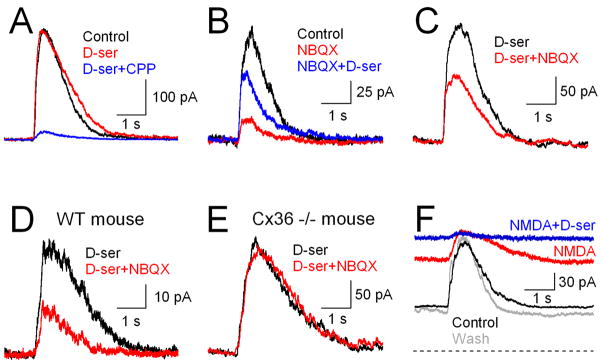Figure 5.
Synaptic release of coagonist contributes to NMDAR activation. A, D-serine (100 μM) did not affect CPPG-evoked EPSCs, indicating that the NMDAR coagonist site is saturated during evoked responses. B, D-serine potentiates the EPSC in the presence of NBQX, indicating that NBQX relieves saturation of the coagonist site. C, NBQX’s reduction of CPPG-evoked EPSCs was less in the presence of D-serine. D, NBQX reduced EPSCs in WT mice in the presence of D-serine. E, NBQX exerted no effect on EPSCs in the presence of D-serine in Cx36 −/− mice. F, Addition of NMDA (100 μM, red trace) to the superfusion solution increased the holding current and reduced CPPG-evoked EPSC amplitude (Vhold = +40 mV). Subsequent addition of D-serine (100 μM, blue trace) further increased the holding current and eliminated the EPSC. NMDA and D-serine washed out (gray trace). Dashed line indicates zero holding current.

